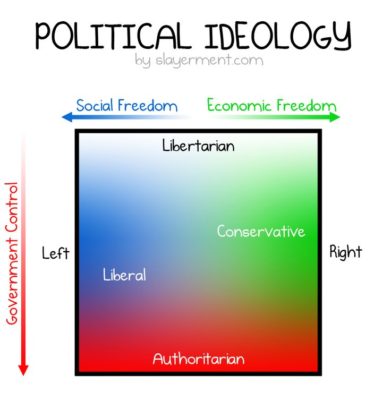The left-right paradigm is the traditional understanding of the political spectrum as it is taught in political science classrooms and practiced by the mainstream. This simplification makes it easy to draw comparisons between political stances so that a lay audience can understand conversationally.
The left-right divide emerged from the French Revolution of 1789, a couple of hundred years ago. That cultural and political shift, occurring shortly after the American Revolution, marked a global transition from feudal, monarchial governments to parliamentary constitutional republics.
The movement culminated in the early 20th century with the collapse of one of the greatest monarchial structure at that time, the Qing Empire in China.
But the left-right debate is an over-simplification.
Initially, the French leftists favored decentralized authority while the right supported the monarch. This dichotomy has evolved considerably in the centuries and even differs from country to country. Leftists in India, for example, might be aligned more closely with those on the political right in Canada.
As political parties compete for votes and political issues develop, the sides morph and change.
One effective way is to consider two spectra— Authoritarian to Libertarian plotted against Capitalist to Socialist. In a sense, this juxtaposes political leaning with economic philosophy. This is a considerably more accurate depiction and effectively illustrates that authoritarians exist on both the economic left, traditionally associated with socialism, and the capitalist right.
In light of the recent labeling of Canada’s Freedom Convoy as “far-right,” let’s consider another angle.
How about the idea that what is politically right is also morally right (correct) in the sense of good against evil? Many leftists worldwide label certain information as right in a ploy to “other it” and present it as not worth pursuing. But, what if what they are really saying is that information is correct and proper?
It aligns well with the reality that most religions are considered politically right. It’s difficult to say that religions, which are some of the most massive political organizations on the planet, are wrong. Indeed, all religions practice, advise, and promise all of the good things in life to their followers.
So, if the political right is correct and proper, this logically leads one to find the left as wrong. Indeed, in the original French language, the word gauche, which means left, also means wrong.
Freedom is a right concept. In the Buddhist sense, consider the Noble Eightfold Path. It is the path for liberation from all suffering. There are eight steps. Right Understanding, Right Intention, Right Speech, Right Action, Right Effort, Right Livelihood, Right Mindfulness, and Right Concentration. Doubtful that the amoral, atheist, agnostic political left has any interest in this nonsense. Do they?
In a sense, this makes the political left natural clowns. For some people, being a clown is a way of life. For others, they are unknowingly clownish and trollish. Their purpose is to entertain, mislead, distract, and present a temporary fake reality. To many considering the political left today as freedom-loving countries that have for centuries nurtured liberal democracies, this might make a lot of sense. What politician in their rational mind would decide that authoritarian tactics are to be perpetuated?
Well, many Western democracies have found themselves led by such clownish figures— demented octogenarians or bratty trust fund youngsters. Not a recipe for a well-led state.
